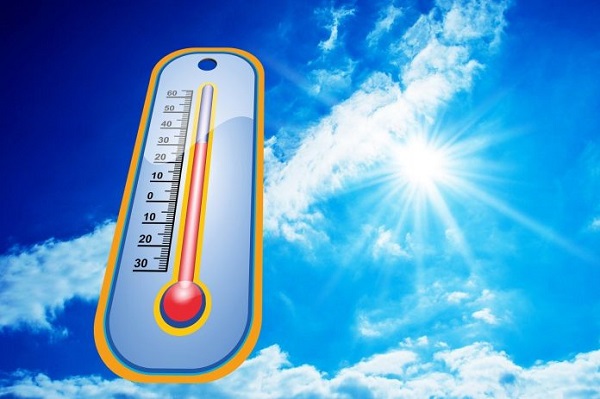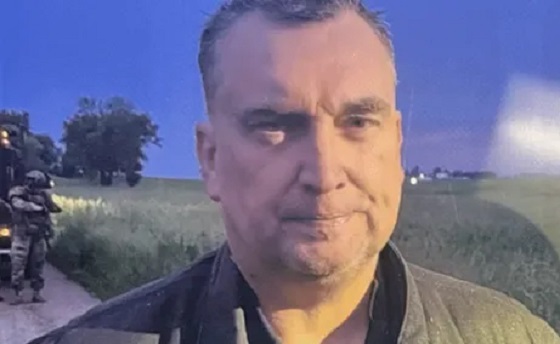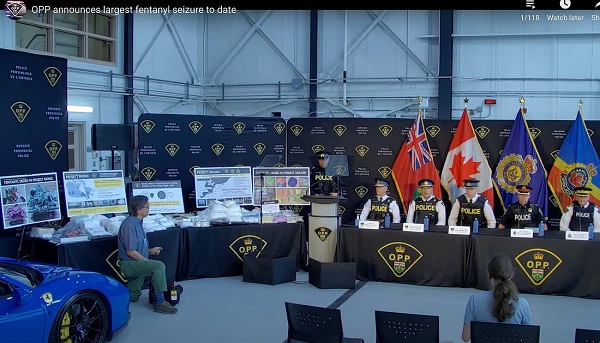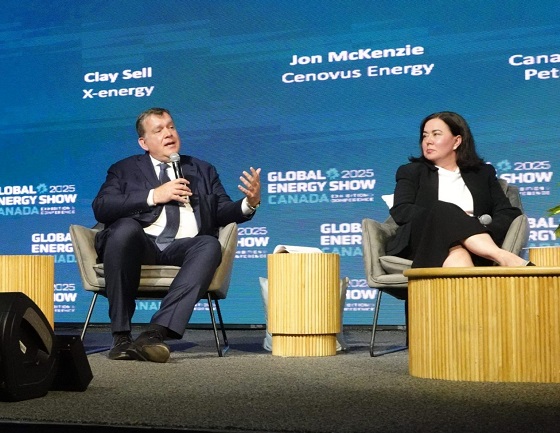Frontier Centre for Public Policy
‘Hottest Year in History’ Alarms are False

From the Frontier Centre for Public Policy
By Ian Madsen
It’s that time of year for breathless reports about planetary heating. Multilateral institutions, including the United Nations, recently made worldwide headlines, proclaiming 2023 as the hottest year in history.
The increase in average temperature, versus the longer-term average from 1850 to 1900, was a rise of 1.48 degrees Celsius. However, with the considerable difficulty of having truly comparable sets of measurements (from different sites in different years), one should treat such claims carefully. Interested parties use them to promote ‘solutions’ that could do more harm than good. It is notable that this new ‘high’ temperature was only 0.17 degree Celsius higher than in 2016.
NASA notes five factors explaining higher temperatures. Only one is the ‘usual suspect,’ greenhouse gases (mainly carbon dioxide, ‘CO2’). The other four are: the El Niño Southern Oscillation, ‘ENSO’, cycle; aerosol levels (such as smoke, dust and air pollution); volcanic eruptions; and general ocean temperature level and trends. NASA says the first and last of these affect current overall temperature.
The world has been in what meteorologists call an El Niño phase, which brings much higher temperatures to most of the world when it prevails. The oceans have also been gradually warming for decades, with occasional pauses, as in the period 1998-2013.
There are other major reasons to make an observer skeptical of extreme claims. The first is that this is a ‘history’ that is relatively short; i.e., the past 150 years (or even, in practice, much less). A second reason is that wide-scale, reliable global satellite temperature measurement has only been possible since the 1970’s. Before that, temperature monitoring was not systematic.
Until the 1880’s, temperature recordings were mostly in either North America or Europe, and hence show major data biases. Another crucial bias was that many weather stations are in or close to cities, which grew and warmed as they burned more coal (and, later on, more oil and natural gas), causing the heat island effect. The cities, growing gently warmer, also grew toward the weather stations, usually located on the outskirts of cities, especially the stations at airports.
For example, there are two weather stations in Winnipeg – one at the wind-swept airport and the other in the heart of downtown at the Forks. An analysis back in 2007 showed the temperature difference between the two locations to be 1.57 degrees warmer at the Forks. So closing or ignoring the airport temperature measurement location would “on paper” show warming in Winnipeg. It will be the same with most major Canadian airports.
Another valid way to challenge an assertion that 2023 was history’s hottest year, is to examine other time periods to see if one was hotter. The most well known such period came in the 1930’s, which was hotter and drier than the decades before or after. High temperatures set many new records that remain unbroken. The 1970’s were cool, despite rising CO2 emissions.
The Medieval Warm Period, approximately AD 750-1350, was much warmer than today. Farming was commonplace in Greenland, and vineyards grew in Britain. Industrialization began in the 1750’s, so, increased levels of greenhouse gas emissions could not and did not cause ancient warming. Nor did lower CO2 emissions cause the subsequent cooling of the Earth’s atmosphere, which culminated in what is now called the Little Ice Age, AD 1350-1850, from which we are still emerging.
According to interested parties the past year may have set records, but there is no evidence that it was the ‘hottest’.
Its summer time. Enjoy the hot weather. Ignore the climate doomsters.
Ian Madsen is the Senior Policy Analyst at the Frontier Centre for Public Policy
Alberta
Too Graphic For A Press Conference But Fine For Kids In School?

From the Frontier Centre for Public Policy
By Lee Harding
Alberta moves to remove books after disturbing content, too graphic for media to view, was found in schools
Should elementary school children be given books to read with harsh insults against minorities, depictions of oral sex, and other disturbingly graphic and explicit content?
Such books have been in some Alberta elementary schools for a while, and in many school libraries across Canada.
In late May, the Alberta government announced it would establish new guidelines regarding age-appropriate materials in its schools. A government press release included quotes with disturbing content, but at a press conference, Education Minister Demetrios Nicolaides said some book illustrations could not be shown.
“I would show these images to all of you here and to the media, but they are too graphic for a live-stream media event. These examples … illustrate the kind of content that raises concerns amongst parents,” Nicolaides said.
You don’t say? This seems like the sort of stuff no one, except a pervert in a park, would dream of showing to a child. Ironically, the inability to publicize such graphic materials is part of the reason they have been shown to children with little public awareness.
Citizens’ group Action4Canada (A4C) has claimed its activism played a pivotal role in the Alberta decision. The organization has compiled a 36-page document online with examples of objectionable content in Canadian schools. Among the worst is Identical by Ellen Hopkins, which includes graphic descriptions of a little girl being molested by her father.
A4C founder Tanya Gaw has repeatedly tried to raise concerns about objectionable books with school boards, often without success. In some cases, she isn’t even allowed on the agenda if she states her topic upfront. When she is permitted to speak, she’s frequently cut off as soon as she begins quoting from the books, preventing the content from entering the public record.
In January 2023, Gaw made an online presentation to a school board in Mission, B.C. regarding materials in their schools. As she began to screenshare what was there, some board members objected, saying such permission had not been given in advance.
One month later, the board banned Action4Canada from making any further presentations. In later media interviews, the board chair justified the decision by saying Gaw’s PowerPoint contained some graphic and “inappropriate images.”
Exactly, and that is the problem. A recent check showed Mission’s school division only removed four of 15 books A4C objected to. Gaw is just glad “Identical” is one of them.
Pierre Barns, a father from Abbotsford, B.C., made it his mission to notify school boards across Canada what was on their school shelves. An online search was all it took to confirm. A “reply all” from a board member at the Halton School District in Ontario was most ironic.
“I am concerned. This individual has included links to publications and videos which may contain illegal content,” she wrote.
“I’m not sure how to investigate the content of the email safely. Would you please advise us whether or not this person ought to be reported to police? Is there some action we should take?”
There probably was action they should have taken, such as removing the books, but that never happened. Later, they defended a biologically male teacher in their school division who made international headlines by wearing large prosthetic breasts to school.
The Alberta government has committed to conducting public consultations before implementing new policies. It’s a good time for parents and citizens there and in other provinces to speak up. A young mind is a terrible thing to corrupt, but unfortunately, some schools are part of this corrosive effort.
Lee Harding is a research fellow with the Frontier Centre for Public Policy.
Economy
Canada Treats Energy As A Liability. The World Sees It As Power

From the Frontier Institute for Public Policy
Research VP Marco Navarro-Genie warns that Canada’s future hinges on building energy infrastructure, not just expanding pipelines but forging a true North American energy alliance. With global demand rising and authoritarian regimes weaponizing energy, Ottawa’s dithering costs Canada $70 million daily. Sovereignty isn’t secured by speeches but by infrastructure. Until Canada sheds its regulatory paralysis, it will remain a discount supplier in a high stakes geopolitical game. Time to build.
Canada has energy the world is begging for, but ideology and red tape are holding us back
As Prime Minister Mark Carney met with U.S. President Donald Trump recently, energy should have been the issue behind every headline, whether mentioned or not. Canada’s future as a sovereign, economically resilient country will depend in no small part on whether the country seizes this moment or stalls out again in a fog of regulatory inertia and political ambivalence. Canada holds an underleveraged strategic card: the potential to be the world’s most reliable democratic energy supplier. Recent trade figures show Chinese imports of Canadian crude hit a record 7.3 million barrels in March, a direct result of newly expanded access to the Pacific via the Trans Mountain Expansion (TMX), a federally owned pipeline project that now connects Alberta crude to global markets through British Columbia’s coast. But one pipeline does not make a national strategy. Demand in Asia is growing fast. India is among the hungriest, but Canada’s infrastructure is nowhere near meeting that demand.
This matters not just for Canada, but for the United States as well. In a world where energy markets are weaponized and strategic reserves manipulated by authoritarian regimes, the case for a coordinated North American energy alliance is stronger than ever. Such an alliance should not erode national sovereignty. It should reinforce it, allowing Canada, the U.S. and Mexico to insulate themselves collectively from supply shocks and geopolitical blackmail while projecting democratic strength abroad.
But for that alliance to work, Canada must be a credible partner, not merely a junior supplier shackled by Ottawa-induced internal bottlenecks. While the U.S. has leveraged its shale revolution, LNG capacity and permitting reforms to pursue energy dominance, Canada dithers. Projects languish. Investment flees. And meanwhile, Canadian oil continues to flow south at a steep discount, only to be refined and resold, often back to us or our trading partners, at full global prices.

Yes, you read that right. Canada’s oil and gas is sold at a discount to U.S. customers, and that discount costs Canada more than $70 million every single day. The Frontier Centre for Public Policy has developed a real-time tracker to monitor these losses. This pricing gap exists because Canada lacks sufficient pipeline infrastructure to access overseas buyers directly, forcing producers to sell to the U.S., often at below-market rates.
Such massive losses should be unacceptable to any government serious about economic growth, geopolitical influence or environmental integrity. Yet Ottawa continues to speak the language of ambition while legislating the mechanics of paralysis. Stephen Guilbault’s statement that Canada already has enough pipelines speaks to more paralysis..
Canada’s energy infrastructure challenges are not just economic; they are matters of national defence. No country can claim to be secure while relying on another’s pipelines to transport its energy across its own territory. No country can afford to leave its wealth-producing regions boxed in by regulatory choke points or political resistance dressed as environmental virtue.
Our energy economy is fragmented. Western hydrocarbons are stuck inland and must pass through the U.S. to reach Eastern Canada or global markets eastward. This weakens national unity and leaves us exposed to foreign leverage. It also creates strategic vulnerabilities for our allies. American industries depend on Canadian crude. So do U.S. Gulf Coast refineries. And while American officials continue to treat energy as a tool of diplomacy and economic leverage, using energy exports to build alliances and reduce reliance on unstable regimes, Canada treats it as a domestic liability.
We need to shift the frame. Infrastructure isn’t just about steel in the ground; it’s the backbone of strategic autonomy. Pipelines, export terminals and utility corridors would allow Canada to claim its place in the emerging geopolitical order. They would also signal to global investors that Canada is open for business and capable of delivering returns without political obstruction.
The U.S. wants a stable, competent partner to help meet global energy needs. Increasingly, so does the rest of the world. But until we address our internal dysfunction and build, we’re stuck. Stuck watching global opportunities pass us by. Stuck selling low while others sell high. Stuck in a conversation about sovereignty we’re not structurally equipped to address, let alone win.
When Carney meets with Trump again, he would do well to remember that economic independence, not rhetorical unity, is the bedrock of sovereignty. Without infrastructure, Canada brings only words to a hard-power conversation.
Paraphrasing Thomas Hobbes, energy covenants without infrastructure are but words. It’s time to stop posturing and start building.
Marco Navarro-Genie is the vice-president of research at the Frontier Centre for Public Policy. He is co-author, with Barry Cooper, of Canada’s COVID: The Story of a Pandemic Moral Panic (2023).
-

 Health15 hours ago
Health15 hours agoLast day and last chance to win this dream home! Support the 2025 Red Deer Hospital Lottery before midnight!
-

 Business2 days ago
Business2 days agoCarney’s European pivot could quietly reshape Canada’s sovereignty
-

 Crime2 days ago
Crime2 days agoManhunt on for suspect in shooting deaths of Minnesota House speaker, husband
-

 conflict22 hours ago
conflict22 hours ago“Evacuate”: Netanyahu Warns Tehran as Israel Expands Strikes on Iran’s Military Command
-

 Aristotle Foundation19 hours ago
Aristotle Foundation19 hours agoThe Canadian Medical Association’s inexplicable stance on pediatric gender medicine
-

 Alberta2 days ago
Alberta2 days agoAlberta’s grand bargain with Canada includes a new pipeline to Prince Rupert
-

 Energy21 hours ago
Energy21 hours agoCould the G7 Summit in Alberta be a historic moment for Canadian energy?
-

 Crime21 hours ago
Crime21 hours agoMinnesota shooter arrested after 48-hour manhunt





